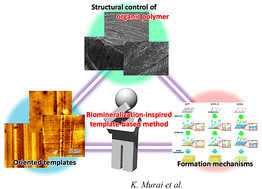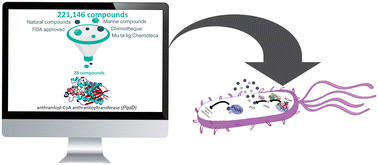Themed collection Molecular Bioengineering

Engineering the interaction of short antimicrobial peptides with bacterial barriers
Designing short antimicrobial peptides and tuning their interaction with bacterial barriers.

Mol. Syst. Des. Eng., 2024,9, 541-560
https://doi.org/10.1039/D4ME00021H
Recent advances in 3D bioprinting of polysaccharide-based bioinks for fabrication of bioengineered tissues
Complex multilayered tissues have been regenerated by extrusion-based 3D bioprinting with biocompatible polymers. Multilayer fabrications with tissue-specific bioinks are possible by controlling gel properties including interaction between layers.

Mol. Syst. Des. Eng., 2024,9, 977-999
https://doi.org/10.1039/D4ME00001C
Fabrication of a photothermal antibacterial platform for bacterial infectious skin wound healing: a review
Antibiotics are the main strategy to treat bacterial infections, but can cause bacterial resistance. We comprehensively summarize work on the fabrication of photothermal antibacterial platforms for bacterial infectious skin wound healing.

Mol. Syst. Des. Eng., 2024,9, 800-813
https://doi.org/10.1039/D4ME00010B
Enhancing enzymatic activity with nanoparticle display – an updated compendium and engineering outlook
Schematic depicting enzyme kinetic enhancement when displayed on a nanoparticle surface. We provide a state of the art review of this phenomenon describing what is known about how it arises along with examples grouped by nanomaterials.

Mol. Syst. Des. Eng., 2024,9, 679-704
https://doi.org/10.1039/D4ME00017J
Dual-labelled polymeric micelles for singlet oxygen reporting in biological systems
Dually-labelled polymeric micelles allowed tracing both the probe location and the levels of singlet oxygen (1O2) in biological systems.

Mol. Syst. Des. Eng., 2025,10, 7-12
https://doi.org/10.1039/D4ME00105B
Vasoactive intestinal peptide amphiphile micelle material properties influence their cell association and internalization
Self-assembled peptide amphiphile micelles act as nanostructured, modular drug delivery vehicles whose architectures can be tuned for efficient transport of therapeutic peptides for a multitude of applications.

Mol. Syst. Des. Eng., 2025,10, 534-548
https://doi.org/10.1039/D4ME00167B
Molecular analysis and design using generative artificial intelligence via multi-agent modeling
We report the use of a multiagent generative artificial intelligence framework, the X-LoRA-Gemma large language model (LLM), to analyze, design and test molecular design.

Mol. Syst. Des. Eng., 2025,10, 314-337
https://doi.org/10.1039/D4ME00174E
Enhanced glucose-responsivity of PBA–diol hydrogel networks by reducing crosslink affinity
New diol chemistries are explored for insulin delivery from glucose-responsive hydrogels comprised of dynamic-covalent crosslinking interactions between phenylboronic acids and diols.

Mol. Syst. Des. Eng., 2025,10, 40-49
https://doi.org/10.1039/D4ME00106K
Multi-site esterification: a tunable, reversible strategy to tailor therapeutic peptides for delivery
Peptides are naturally potent and selective therapeutics with massive potential; however, low cell membrane permeability limits their clinical implementation, particularly for hydrophilic, anionic peptides with intracellular targets.

Mol. Syst. Des. Eng., 2024,9, 1215-1227
https://doi.org/10.1039/D4ME00072B
Supramolecular assembly of multifunctional protein gels via an N-glycosylation consensus sequence fusion domain
Stimuli-responsive polypeptide tags direct the assembly of active proteins into supramolecular assemblies. This allows for recombinant expression of soluble fusion protein and subsequent user-controlled formation of functional biomaterials.

Mol. Syst. Des. Eng., 2024,9, 875-884
https://doi.org/10.1039/D4ME00029C
Liquid metal–polymer nano-microconjugations as an injectable and photo-activatable drug carrier
Nanoparticles of photoresponsive liquid–liquid phase-separation polymers complexed with liquid metals can concentrate drugs upon photoirradiation, opening up new DDS horizons.

Mol. Syst. Des. Eng., 2024,9, 781-789
https://doi.org/10.1039/D4ME00028E
Design and engineering of an artificial disulfide bond in human cytochrome c to regulate the protein structure and function
An artificial disulfide bond was rationally constructed in human cytochrome c (hCyt c) via double mutations (A51C/G77C), which weakened the coordination of Met80 to the heme iron and enhanced the peroxidase activity of hCyt c.

Mol. Syst. Des. Eng., 2024,9, 649-659
https://doi.org/10.1039/D3ME00196B
Optimization of chondroitin production in E. coli using genome scale models
E. coli was used to produce chondroitin both in silico and in vivo, marking the first use of genome-scale metabolic models to predict its production. Identified targets can guide future works towards more efficient hosts for chondroitin production.

Mol. Syst. Des. Eng., 2024,9, 597-611
https://doi.org/10.1039/D3ME00199G
Formation mechanism of anisotropic gelatin hydrogel by self-assembly on oriented templates
The development of structurally controlled techniques inspired by the structural formation of living systems is of great importance for the fabrication of next-generation functional soft materials using environmentally friendly processes.

Mol. Syst. Des. Eng., 2024,9, 561-570
https://doi.org/10.1039/D4ME00023D
A physics-inspired approach to the understanding of molecular representations and models
By drawing on similarities between energy landscapes and model response surfaces we gain new insight into model performance, even in the absence of data.

Mol. Syst. Des. Eng., 2024,9, 449-455
https://doi.org/10.1039/D3ME00189J
Cancer-targeting gold-decorated melanin nanoparticles for in vivo near-infrared photothermal therapy
Melanin-like nanoparticles decorated with gold nanoparticles are presented as cancer-targeting near-infrared (NIR) photothermal agents with excellent photothermal conversion and stability.

Mol. Syst. Des. Eng., 2024,9, 507-517
https://doi.org/10.1039/D3ME00173C
On the use of modelling antagonistic enzymes to aid in temporal programming of pH and PVA–borate gelation
A model was developed to help predict how enzymes can be used to temporally control the gelation of polyvinyl alcohol (PVA) with borate.

Mol. Syst. Des. Eng., 2024,9, 372-381
https://doi.org/10.1039/D3ME00138E
Light-activation of molecular motors in polymersomes
Light-activated molecular motors rotate at a similar frequency in polymersomes and in solution.

Mol. Syst. Des. Eng., 2024,9, 226-233
https://doi.org/10.1039/D3ME00165B
In silico identification of novel PqsD inhibitors: promising molecules for quorum sensing interference in Pseudomonas aeruginosa
PqsD is an anthraniloyl-CoA anthraniloyltransferase involved in the synthesis of the secondary metabolites essential to the formation of Pseudomonas quinolone signal (PQS) inducer molecules.

Mol. Syst. Des. Eng., 2024,9, 7-19
https://doi.org/10.1039/D3ME00107E
About this collection
This special collection of MSDE, Guest Edited by Patrick Stayton (0000-0001-6939-6371) (University of Washington, USA) & José Rafael Bordin (0000-0002-8025-6529) (Federal University of Pelotas, Brazil) showcases the broad and diverse approaches to the cross-disciplinary field that is molecular bioengineering with a particular focus at the molecular level. We are particularly interested in receiving submissions at the interface of multiple disciplines and that showcase applied systems as well as novel design approaches.